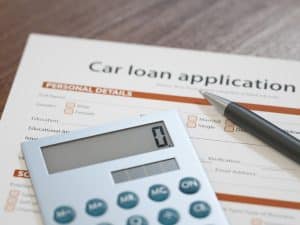
- The Savvy Promise
At Savvy, our mission is to empower you to make informed financial choices. While we maintain stringent editorial standards, this article may include mentions of products offered by our partners. Here’s how we generate income.
In this article
There are many options open to Australians when it comes to purchasing vehicles, which is why it’s important to consider each of them to help you find out what the best way is for you to finance a car. Whether you’re buying a new car or used, you can find all the information you need right here with Savvy.
What is the best way to finance a car in Australia?
The best way to finance your car purchase will depend entirely on your situation. For example, a high income-earner working full-time is likely to have different requirements from a university student or a couple running their own business. It’s therefore important to find out more about each of the different options available to you to see which might be the most suitable for your situation. Some of the most common ways to purchase a car include:
Secured car loan
Perhaps the most popular form of finance for a vehicle purchase, a car loan is a credit product designed specifically for buying your car. The vehicle acts as security for the loan, giving you access to lower interest rates and fees compared to other unsecured finance types. You can pay off your loan over between one and seven years, giving you flexibility in the size of your repayments and ensuring it’ll be completed within a relatively short timeframe.
Car loans are suited to those who either can’t afford to pay the full price of their chosen vehicle upfront or wish to keep their savings intact for other purposes, such as putting them towards another investment. An additional positive of taking out a car loan is the boost it can give to your credit score if you reliably keep up with its repayments, which may make it easier to take out other loans down the line.
Unsecured car loan (personal loan)
An unsecured car loan (otherwise known as a personal loan) is similar to a car loan in many ways: you take out a lump sum to cover the purchase of your car and repay it in instalments with interest across one to seven years, during which time you can boost your credit profile. However, because the car you’re buying isn’t acting as collateral for the loan, you’re likely to be subject to notably higher interest rates and fees. The flip side of this is that you can use the funds however you like and borrow money to put towards other expenses, rather than your car alone.
In most cases, unsecured car loans are only advised for vehicle purchases if the model you’re after doesn’t qualify for secured finance through your lender. For example, if you wanted a 25-year-old car but your lender only finances vehicles up to 15 years old, you may instead be offered an unsecured loan deal.
Savings
If you have enough in the bank to purchase a car without a loan product, it may be a strong option to do so. Buying your car with cash could save you thousands of dollars in interest and fees. You also won’t have to worry about any ongoing, long-term commitments to paying your lender. Perhaps most importantly, though, buying your car with savings is straightforward and will save valuable time.
However, the reality is that many Australians aren’t in a position to buy their next car with savings alone. If buying a car outright would leave you short on cash for your other living expenses, it might be wise to consider your other options.
Novated leasing
A novated lease may also be an option available to you in certain situations. This is a three-way arrangement involving your novated lease company and employer whereby your employer makes payments to the company on your behalf, deducting the amount from your pre-tax salary to cover the cost. The main benefits of novated leasing relate to tax: because these payments are made from your pre-tax income, you’ll pay less income tax at the end of the financial year. Additionally, because the company is purchasing the car and claiming GST, you'll be receiving the vehicle at a discount.
At the end of your one to five-year lease, you’ll have to deal with a residual either by paying it out and taking ownership of the car, trading in or selling the vehicle to cover the residual and taking out a new novated lease or refinancing the residual and extending your term. Although there aren’t any requirements for the vehicle to be used for business purposes, not all employers will be able to agree to this arrangement.
Home loan redraw
If you’re currently paying off your mortgage and have a redraw facility attached, you also have the option to use this to withdraw funds and use them to purchase your vehicle. In effect, this means you’ll be adding your car to your home loan. The primary benefit of doing so is that you won’t have to worry about having multiple debts to juggle and several payments coming out of your account at differing intervals. Above all else, it’s a convenient option.
It's important to note, though, that this will likely cost you more overall, even with home loans coming at a lower interest rate than car loans. This is because they’re a much longer-term product. Take the following example:
You have $500,000 outstanding on your home loan at 3.5% p.a. with 25 years left to run and an offset account balance of $50,000. To buy your $30,000 car, you withdraw this amount from your offset account, leaving you with $20,000. By keeping this remaining balance, you’d save almost $26,700 and shave ten months off your home loan term.
By instead taking out a $30,000 car loan at 10% p.a., you’d pay just under $11,750 in interest over a seven-year term. However, by keeping the $50,000 in your offset account for the remainder of your home loan, you’d save almost $62,300 in interest and pay off the mortgage over two years sooner. Overall, you would save an additional $23,861.93 by not withdrawing from your mortgage and instead taking out a higher-interest loan.
Chattel mortgage
If you’re looking for the best way to finance a car for your business, you might consider a chattel mortgage. This is essentially the same as a car loan with a few extra features and conditions. While you can pay a deposit to your chattel mortgage, you can also add a customisable residual to be paid at the end of your agreement, which can help you reduce your ongoing repayments. You can also claim the GST on the purchase, as well as interest and depreciation, as tax deductions.
These are highly suitable for operators who wish to purchase an asset for their business which they own upfront, as it can provide an effective solution which doesn’t eat too much into your available cashflow.
Credit card
Lastly, you might think that simply putting your car on your credit card is a good idea. This is only the case if you have the funds available to pay off the debt in full within a very brief window, as exorbitant rates can apply if your outstanding card balance exceeds the interest-free period. Not paying it off within a few months could see your debts mount very quickly and put you at greater risk of financial stress. As such, using your credit card to buy your next car is rarely the best option.
Is it better to finance my car through a dealership?
While it may seem more convenient to take out finance through the dealer you’re purchasing your car from, dealership finance is often a less affordable and suitable way to buy your vehicle. There are several reasons why it’s important to consider dealership finance compared to standard car loans, including the following:
- 0% p.a. finance isn’t really 0% p.a.: many dealers will advertise 0% p.a. finance alongside their vehicles, but this is rarely as good a deal as it seems. This is because other, more significant fees can often be included in this deal, as well as the fact that the price of the car itself may be inflated to compensate for the lack of interest. Additionally, this rate may only be offered for the first six to 12 months of the loan, leaving you with a more expensive burden for the remainder of its term.
- Compulsory residual payments: in some cases, the reason why a loan offer may seem so attractive on paper is because the dealer has built a compulsory residual payment into the agreement. This means you could be forced to stump up a lump sum of up to 25% to 30% of the total cost of your car at the conclusion of your loan.
- May only be available to new models: some dealers will only offer finance for brand-new cars, rather than for both new and used (as is the case with standard car loans). This can be highly restrictive and may simply count you out from being eligible for a loan via this avenue entirely.
- Less affordable at certain times of the year: the end of the financial year brings with it a range of highly affordable offers from dealerships, as does the end of the calendar year through plate clearances. The same can also extend to finance deals, as you may find more suitable opportunities for dealership finance at the pointy ends of the year than at other stages.
- Fewer options to choose from: dealers may only have a limited number of finance options available to draw from, restricting your ability to search around and dig into which financier offers the best deal. By seeking out finance through a car broker, for example, you can receive expert advice and have your consultant draw on a wide range of finance options to source the best one for you. You can do just that right here with Savvy by getting a quote with us today.
Is a green loan the best way to purchase an environmentally friendly car?
In many cases, yes – green loans are a type of car loan designed for the purchase of more environmentally friendly models, such as hybrid or electric vehicles. While they’re no different in terms of their structure compared to a standard car loan, the main thing that sets them apart is that the finance companies that offer them will typically do so with a lower interest rate or fewer fees. For instance, you may find that the interest offered is 0.5% p.a. lower for a hybrid vehicle than the regular car you were originally looking to purchase. This is a way for lenders to reward individuals who are taking the right steps to help the environment and reduce their carbon footprint.
However, it’s important to note that the parameters for what constitutes a “green” vehicle can differ between lenders. They’ll typically have a list of approved models which qualify for rate discounts, so there may be cases where the hybrid or electric vehicle you select may not be included in this list. In these situations, you can simply turn to a standard car loan to help you access the finance you need.
You can find out more about buying an eco-friendly car in Australia and any government incentives here.
How can I work out the cost of my car finance deal?
It’s important to know going into your car finance agreement how much it’s likely to cost you overall. Fortunately, because car loans come with fixed interest rates, it’s relatively simple to work out their overall cost if you know the interest rates and fees you’re going to pay.
Savvy has a range of calculators available to those in the market for a vehicle to help them work out what their proposed finance agreement will cost them both overall and month to month. You can familiarise yourself with these tools so you can properly compare the costs of each option.
How can I get the best car finance deal?
Securing the best finance deal for your car purchase can save you money in the long run. Here are some tips to help you get the most favourable terms:
- Shop around and compare: don't settle for the first finance offer you receive. Take the time to shop around and compare loan terms, interest rates, and fees from different lenders, including banks, credit unions, online lenders and car finance specialists like Savvy.
- Improve your credit score: this is one of the most impactful ways to secure a lower interest rate. A higher credit score can significantly reduce your monthly payments and save you thousands of dollars over the life of the loan. Review your credit report before applying for finance to ensure it’s accurate and up to date, and take steps to improve your score if necessary.
- Negotiate: don't be afraid to negotiate with lenders to try to secure better loan terms, such as lower interest rates or reduced fees.
- Have a larger down payment: a bigger down payment reduces the loan amount you need to borrow. This can lead to a lower interest rate and potentially lower monthly payments.
- Consider using a broker: car finance brokers can help you navigate the complex world of car finance and negotiate on your behalf to secure the best possible deal. They have access to a wide range of lenders and can provide expert advice tailored to your individual circumstances. If you are looking for car finance, get in touch with Savvy’s experienced team of brokers to get started today.
Did you find this page helpful?
Author
Adrian EdlingtonReviewer
Bill TsouvalasPublished on September 27th, 2022
Last updated on April 19th, 2024
Fact checked
This guide provides general information and does not consider your individual needs, finances or objectives. We do not make any recommendation or suggestion about which product is best for you based on your specific situation and we do not compare all companies in the market, or all products offered by all companies. It’s always important to consider whether professional financial, legal or taxation advice is appropriate for you before choosing or purchasing a financial product.
The content on our website is produced by experts in the field of finance and reviewed as part of our editorial guidelines. We endeavour to keep all information across our site updated with accurate information.
Approval for car loans is always subject to our lender’s terms, conditions and qualification criteria. Lenders will undertake a credit check in line with responsible lending obligations to help determine whether you’re in a position to take on the loan you’re applying for.
The interest rate, comparison rate, fees and monthly repayments will depend on factors specific to your profile, such as your financial situation, as well others, such as the loan’s size and your chosen repayment term. Costs such as broker fees, redraw fees or early repayment fees, and cost savings such as fee waivers, aren’t included in the comparison rate but may influence the cost of the loan. Different terms, fees or other loan amounts may result in a different comparison rate.










